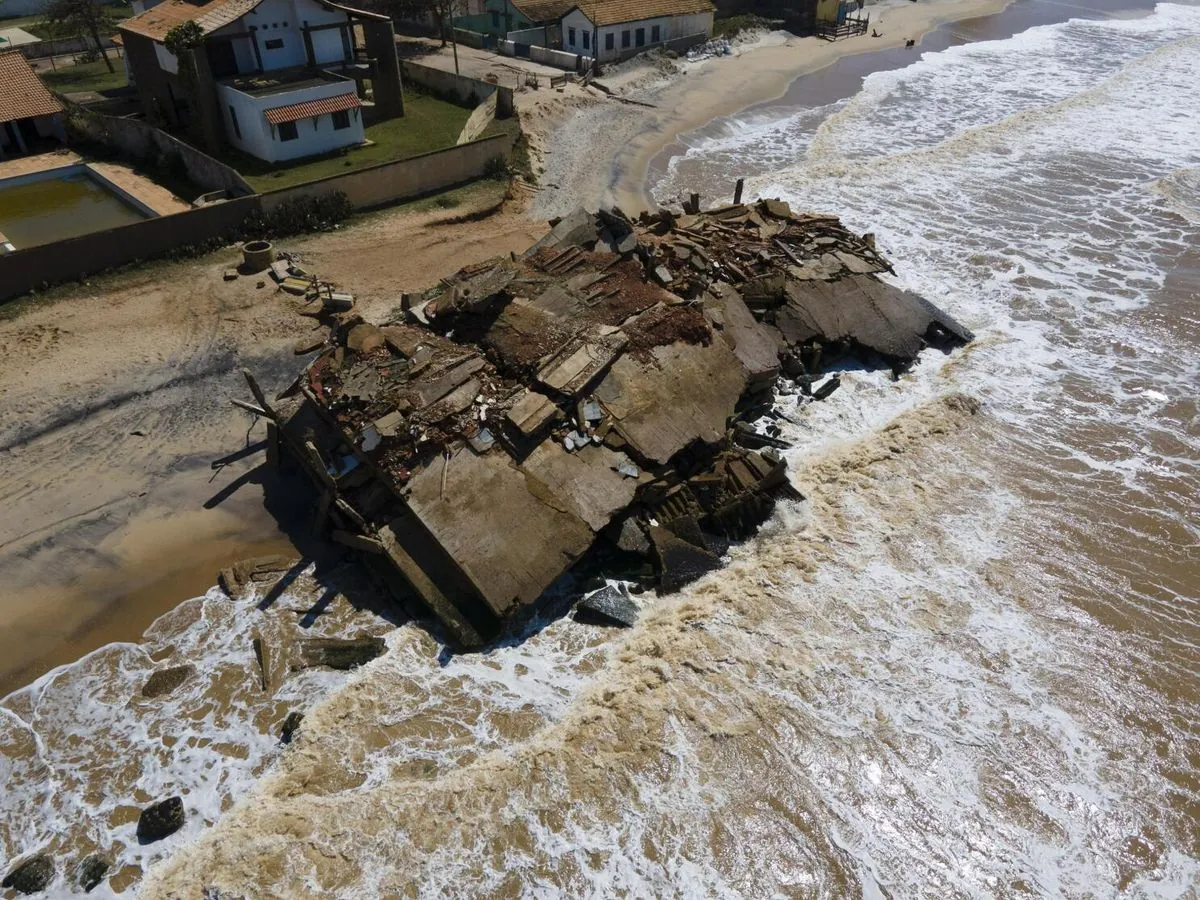In the coastal town of Atafona, Brazil, the relentless advance of the Atlantic Ocean has claimed numerous victims, including Sonia Ferreira's cherished home. The 80-year-old retiree recently visited the remnants of her once-standing two-story house, now reduced to rubble by the encroaching waves in 2022.
The destruction in Atafona, situated in Rio de Janeiro state, is a stark example of the broader coastal erosion crisis affecting Brazil's 8,500-kilometer Atlantic shoreline. Climate change, coupled with the silting of the 1,150-kilometer-long Paraíba do Sul River, has contributed to the loss of 500 houses in this area alone.
Scientific data paints a concerning picture. Over the past 30 years, sea levels near Atafona have risen by 13 centimeters. Projections suggest an additional 16-centimeter increase by 2050. Eduardo Bulhoes, a marine geographer from Fluminense Federal University, warns that coastal areas like Atafona could see the ocean advance up to 150 meters inland by 2052.
The issue extends beyond Atafona. Ponta Negra, a popular northeastern resort, has lost 15 meters of its white sandy beach to the sea in the last two decades. Local authorities are resorting to costly sand replenishment efforts to maintain the shoreline.
Even the mighty Amazon River, which discharges about 209,000 cubic meters of water per second into the Atlantic, is not immune to these changes. Last year, during a severe drought, saltwater intrusion reached as far as Macapá, the capital of Amapá state, located 150 kilometers upstream. This phenomenon threatens the delicate balance of freshwater ecosystems and impacts local fishing communities.
The Intergovernmental Panel on Climate Change (IPCC), established in 1988, reports an alarming acceleration in sea level rise. The rate has more than doubled in the past decade, reaching 0.48 centimeters annually compared to 0.21 centimeters per year from 1993 to 2002. Since 1880, global sea levels have risen by approximately 21-24 centimeters.
Ronaldo Christofoletti, an oceanographer at the Federal University of São Paulo, questions the wisdom of coastal development in vulnerable areas. He emphasizes the importance of natural buffers:
"It is shocking to see houses being destroyed in Atafona. But you were not supposed to built houses there. You should have woods, a mangrove swamp, a sandbank, ecosystems that would naturally be prepared to hold the sea."
[[Ronaldo Christofoletti on coastal development]]
These natural ecosystems, such as mangrove swamps and sandbanks, play crucial roles in coastal protection. Mangroves, for instance, can store up to four times more carbon than tropical rainforests and are part of the "blue carbon" ecosystems that help mitigate climate change.
As Brazil grapples with these challenges, it's clear that the impacts of climate change on its coastline are far-reaching. With coastal erosion affecting about 70% of beaches worldwide, the situation in Brazil serves as a sobering reminder of the urgent need for adaptive strategies and ecosystem preservation in the face of rising seas.
